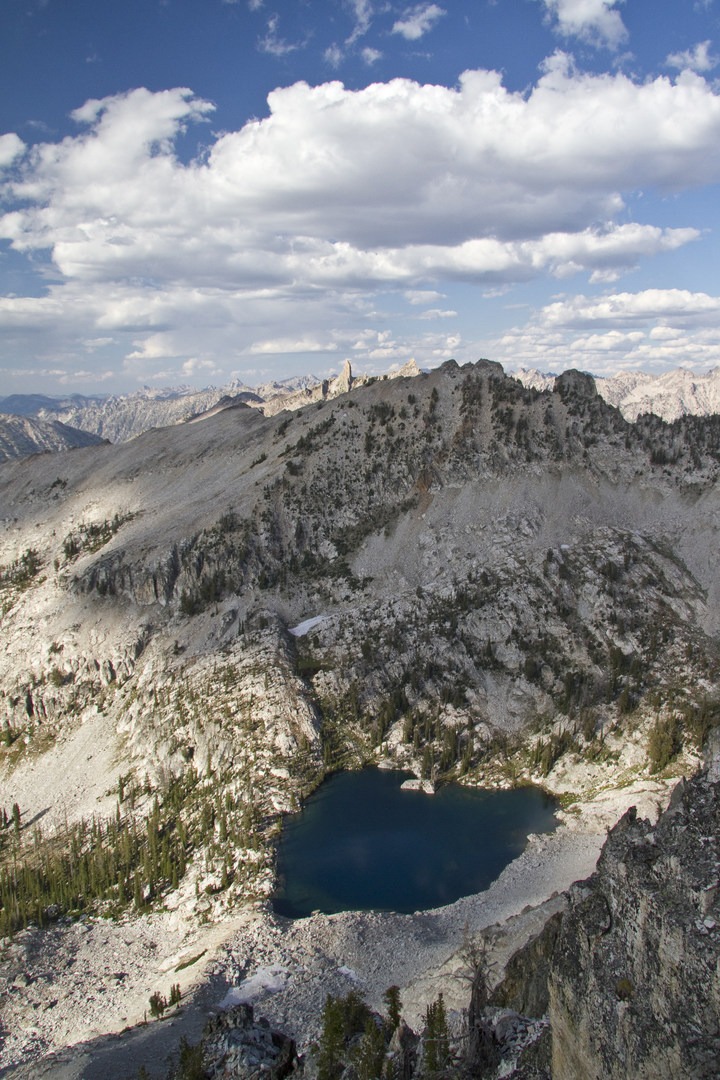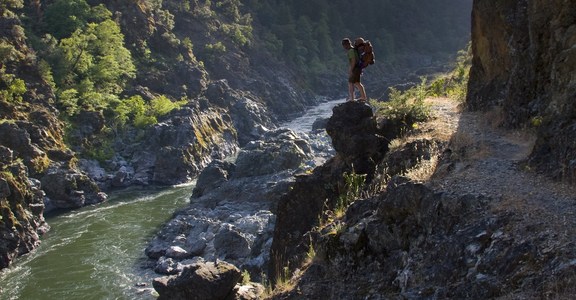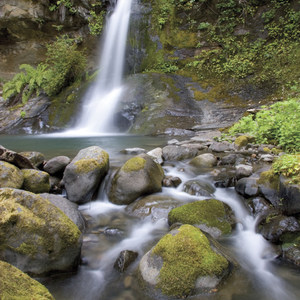Pats and Arrowhead lakes occupy one of two cirques at the head of Johnson Creek. The mileages given are from the Little Queens Trailhead. The lakes, however, can be reached in nearly the same distance but with less vertical climbing from the Queens River drainage. To access from the Queens River drainage, check out the Lake 8,696 adventure. If you want to come in via Little Queens River, check out the Scenic Lake, Browns Lake, and Johnson Lake adventures that are located further down the Little Queens River Canyon. Note that the Queens and Little Queens drainages burned significantly in 2013. Expect to encounter charred forest, downed trees, altered description, and other effects from the fire.
Pats and Arrowhead Lakes
Pats and Arrowhead Lakes fill two hanging basins in the northernmost cirque of the Johnson Creek headwaters. The steep walls of Blacknose Mountain and Anderson Peak hem in these emerald gems. Much of this basin burned in the Rabbit Creek fire in 1994. The climb up to Pats through a riot of flowers and shrubs crowding several springs is a very pretty section of the trail.
Hiking distances and ascents are as follows:
• From Little Queens to Pats Lake: 14.6 miles, 4,846 feet.
• From Little Queens River to Scenic Lake: 9.6 miles, 3,423 feet.
• From Little Queens River to Browns Lake: 9.2 miles, 3,220 feet.
• From Little Queens River to Johnson Lake: 10.5 miles, 3,450 feet.
• From Queens River to Pats Lake: 15 miles, 4,294 feet.
• Queens River Loop : Queens River to Johnson Creek to Little Queens River: 29.8 miles, 5,930 feet.
Additional Adventures
From Pats Lake and Arrowhead Lake, it is possible to climb over the Queens River Divide to Lake 8,696 and then over the Everly Divide into the South Fork of the Payette River to Everly + Plummer Lakes. This can be done as a day hike, or part of a longer, more extensive backpack route.
Off-Trail Hiking
Anderson Peak and Blacknose Mountain can both be summited via moderate Class 3 routes with some steep exposure on one side of each ridge. Anderson can be included as part of a ridgeline loop from Pats Lake by either its Class 4 west ridge or the Class 2 south ridge. Both Smokey Peak and Edaho Mountain can be reached by traversing nearly 3 miles of undulating ridgeline, the latter route being more difficult due to a raised dike halfway to the summit.
Anderson Peak is unofficially named after Arval Anderson, who spent the summer and fall of 1927 mapping the western half of the Sawtooths with his wife Maysal, younger brother Joel, and packer Hank Holverson. Anderson was one of his favorite triangulation stations, and it offers an outstanding 360-degree view from the summit. A granite plaque commemorating Anderson is found on the summit
Wilderness Regulations
Most of the trail lies within the Sawtooth Wilderness. Please observe the following regulations:
• Mountain bikes are not allowed past the wilderness boundary.
• Self administered wilderness permits are required and available at the trailhead.
• Dogs must be on a leash between July 1 and Labor Day.
• Camp 100 feet from trails, lakes and streams.
• Pack out all garbage.
• Human waste should be buried and well disguised in a cat hole that is 6 to 8 inches deep. Pack out all toilet paper.
• Campfires allowed ONLY in a backcountry pan or fire blanket.
• Campfires are NOT allowed at some lakes and in some drainages in the Sawtooths. Please review the campfire restrictions at individual trailheads.
• Permits required for all stock use in the wilderness. No grazing allowed in the Salmon River watershed (This includes the Alpine Lake drainage).
• No equine stock at Edith Lake. ALL stock prohibited in the Goat Creek and Alpine Creek (Alturas Lake) drainages.
Reference: All content excerpted from Exploring the Sawtooths - A Comprehensive Guide by Idaho River Publications.
Logistics + Planning
Current Weather: Powered by Dark Sky







Preferable season(s)
Congestion
Parking Pass
Pros
Cons
Trailhead Elevation
Features
Suitable for
Our mission is to inspire adventure with beautiful, comprehensive and waterproof map-based guidebooks. Owner, publisher, and photographer Matt Leidecker, grew up exploring and guiding on the rivers in central Idaho. His award winning Middle Fork of the Salmon River – A Comprehensive Guide is the standard by which other river guidebooks are measured. Printed on virtually indestructible YUPO paper, IRP guides are truly unique all-in-one resources for adventure. Each book is loaded with full-color maps, stunning photographs, and information on the history, geology, and wildflowers. Visit Idaho River Publications to explore our guidebooks to the Rogue River in Oregon and the mountains of Central Idaho.


















Comments
Sign In and share them.